
The
Victor-Victrola Page
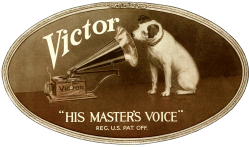
Design
Details:
1. Horns
2. Tonearm Designs
3.
Cabinet Features
4.
Soundboxes
5. Cranks, Speed Controls and Brakes
Pictures and details on
some
of the design features of External Horn Victor phonographs. Each sequential page covers one
aspect of the evolving designs. Advance to the next page via the link above or
at the bottom of each page
Cranks (Victor
referred to these as "Winding Keys").
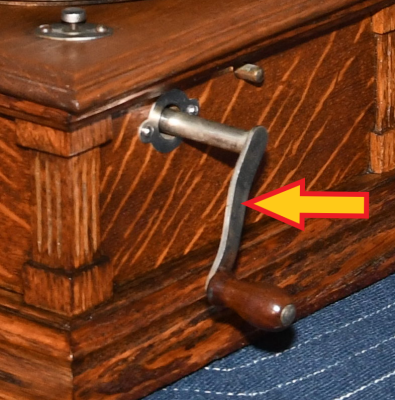 Early
Victors used Flat-Shank winding keys. Most of these cranks had
female threads. The thread sizes vary, depending on date of manufacture.
Early
Victors used Flat-Shank winding keys. Most of these cranks had
female threads. The thread sizes vary, depending on date of manufacture.
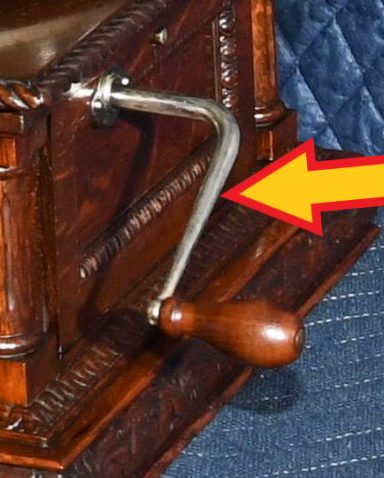 Later
Victors used Round-Shank winding keys. These cranks used either
a male or female thread, depending on date of manufacture.
Later
Victors used Round-Shank winding keys. These cranks used either
a male or female thread, depending on date of manufacture.
Speed Controls
All Victors had some type of control on the motorboard to vary the motor speed
to match the record being played. Early record manufacturers would record at
speeds varying from 60 to 90 RPM. All Victor records are intended to be played
at 78 RPM
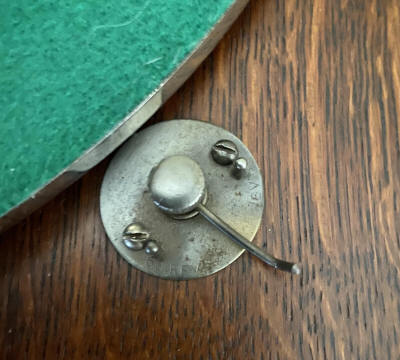
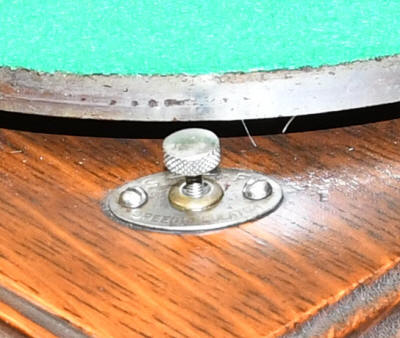 The
earliest Victors and most low-priced models used a Simple Speed Control
Knob to adjust the turntable speed (left). Some of the more deluxe
machines had a wire "extender" protruding out of the knob to make the speed
adjustment easier (right)
The
earliest Victors and most low-priced models used a Simple Speed Control
Knob to adjust the turntable speed (left). Some of the more deluxe
machines had a wire "extender" protruding out of the knob to make the speed
adjustment easier (right)
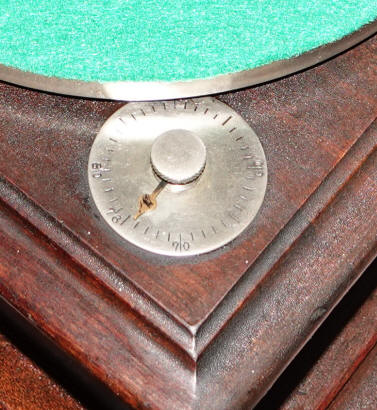 Some
of the more deluxe models, such as the "Victor V" and "Victor
VI" used a Round Speed Control Bezel, with a pointer
to reference the desired speed. This feature was first adopted in late 1905.
Some
of the more deluxe models, such as the "Victor V" and "Victor
VI" used a Round Speed Control Bezel, with a pointer
to reference the desired speed. This feature was first adopted in late 1905.
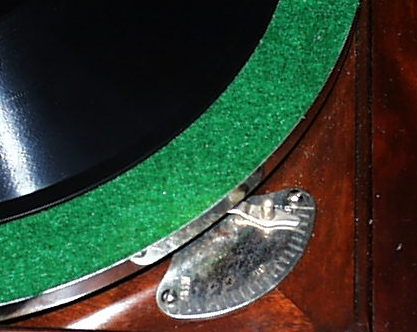 Around
1913, the "Schoolhouse" Model (V-XXV) used a Semi-Circular
Speed Control Bezel design; however, this style was never used on
standard tabletop Victors.
Around
1913, the "Schoolhouse" Model (V-XXV) used a Semi-Circular
Speed Control Bezel design; however, this style was never used on
standard tabletop Victors.
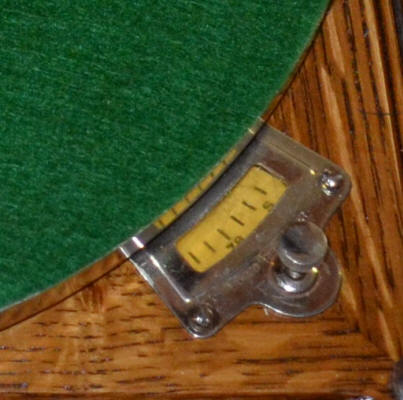 Internal-horn
Victrolas started using the Small Glass Speed Control design
around 1916. This feature was eventually adapted for use on a few of the very
late external-horn models around 1920. The indicator arrow displays the actual
turntable speed (when calibrated), which can be adjusted by the knob.
Internal-horn
Victrolas started using the Small Glass Speed Control design
around 1916. This feature was eventually adapted for use on a few of the very
late external-horn models around 1920. The indicator arrow displays the actual
turntable speed (when calibrated), which can be adjusted by the knob.
Brakes
All Victors had a simple brake system to stop the turntable from spinning
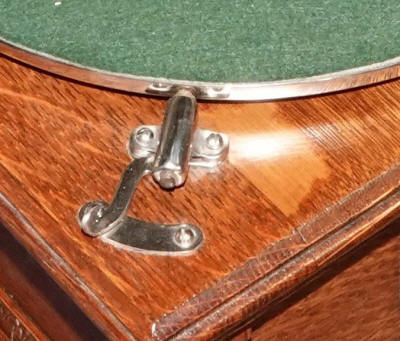 The
vast majority of Victor machines used the Bullet Brake. When
engaged, a leather pad contacted the turntable causing it to stop.
The
vast majority of Victor machines used the Bullet Brake. When
engaged, a leather pad contacted the turntable causing it to stop.
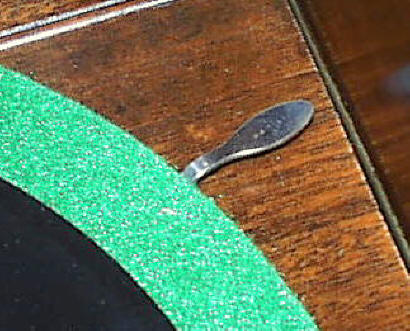 Some
of the very late Victor machines made in the late 'teens or early 20's used the
Tab Brake. This design "hid" the leather pad under the
turntable platter
Some
of the very late Victor machines made in the late 'teens or early 20's used the
Tab Brake. This design "hid" the leather pad under the
turntable platter


 Early
Victors used Flat-Shank winding keys. Most of these cranks had
female threads. The thread sizes vary, depending on date of manufacture.
Early
Victors used Flat-Shank winding keys. Most of these cranks had
female threads. The thread sizes vary, depending on date of manufacture. 


